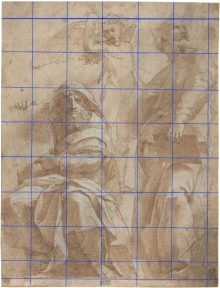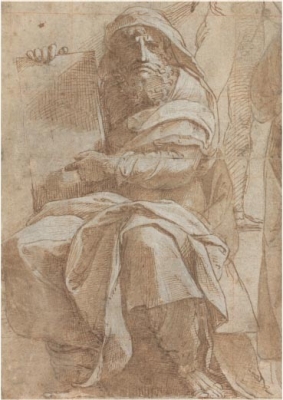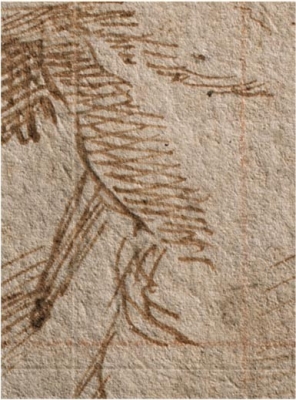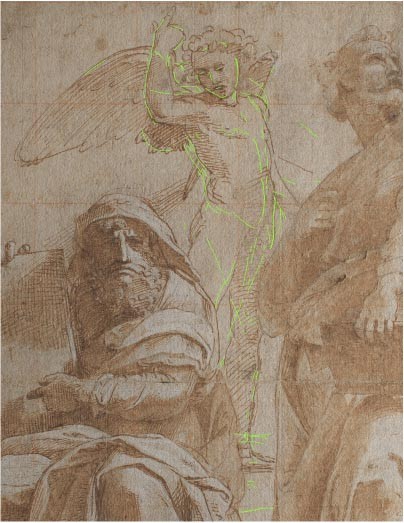Raphael first squared the sheet of paper when the page was still completely blank. The blind stylus grid, here shown in blue, enabled Raphael to draw in the figures on the desired scale and to develop his design without the squaring interfering visually with his drawing. The bottom stylus line may have been put in after the entire grid was in place. This line acts as the base for the prophets’ feet.
Up Close: Raphael's The Prophets
Hosea and Jonah
Raphael’s remarkable drawing The Prophets Hosea and Jonah (c. 1510) is a preparatory study for a fresco in the Chigi Chapel in Santa Maria della Pace in Rome. The artist drew the figures using pen and brown iron gall ink, ink wash, and lead white watercolor over an underdrawing of charcoal and stylus, a pointed tool that leaves an indented or “blind” line but no visible mark. The presence of two grids on the drawing, one in stylus and the other in red chalk, suggests that the design (or parts of the design) was transferred from a preliminary sketch to the sheet, and then the completed composition was itself transferred to a third sheet. To transfer or change the size of a composition, a squared grid is drawn on top of the original sketch. A second grid (sometimes larger if the scale of the composition is being increased) is then made on another sheet of paper. The outlines of the composition are then faithfully copied one square at a time to the second sheet using the grids for reference.
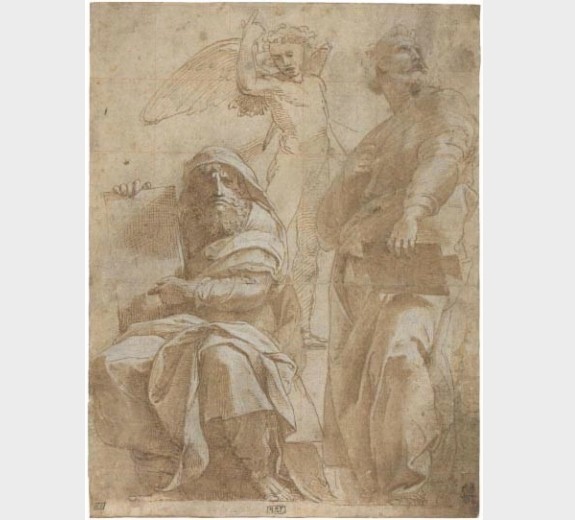
Raphael, The Prophets Hosea and Jonah, c. 1510, pen and brown ink with brown wash over charcoal and stylus, heightened with white and squared for transfer, National Gallery of Art, The Armand Hammer Collection
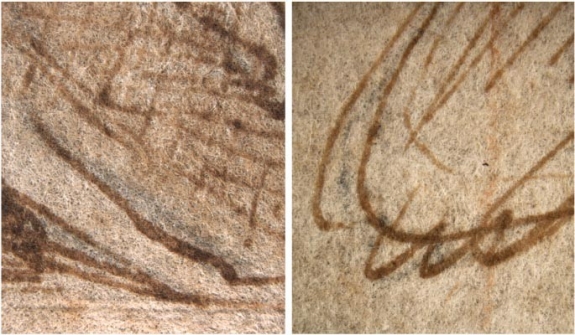
Raphael sketched the figures first in charcoal, which lies underneath the brown ink. In these detail photographs taken using the microscope, the dark gray lines of charcoal can be easily detected. The charcoal lines in the drapery of the seated prophet, pictured here on the left, appear wider than those in the angel’s left wing, pictured on the above right.
Below on the right is an infrared reflectogram of the drawing, which reveals the charcoal underdrawing. In infrared images, media that contain carbon particles, such as charcoal, remain evident whereas other materials, like brown iron gall ink, disappear. In the reflectogram there are slight differences in the appearance of the lines establishing the prophets and those used in angel. The charcoal lines of the prophets, particularly in the drapery at the center bottom, are more angular and considered than the more graceful and thinner lines in the angel. The portion of the sheet occupied by the prophets appears darker gray in the infrared image than does the area with the angel. This indicates that Raphael made changes in the two prophets by rubbing away some of the charcoal lines and redrawing them. The scattered charcoal particles became trapped in the paper fibers and consequently are now more evident in the infrared image. The differences in line quality and the presence of the erased particles suggest that the prophets and angel were drawn at a different points in the development of the drawing.
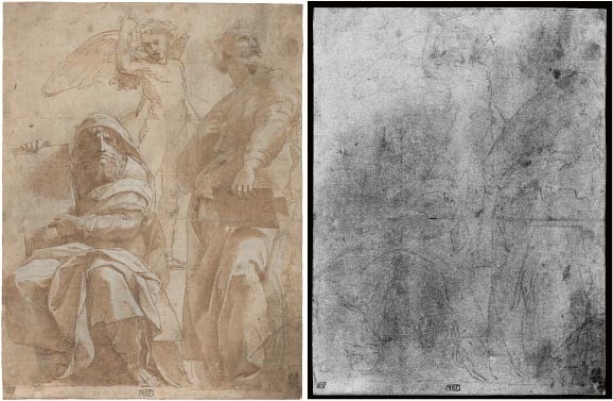
After determining the placement of the prophets with charcoal, Raphael penned in the figures using iron gall ink and modeled them with ink washes using a brush. He added highlights to the prophets using lead white watercolor. This detail of the prophet Hosea shows the extent of the cross-hatching and ink washes in the shadows and the white heightening in the drapery and face.
The drawing of the angel evolved differently than the two prophets. Raphael first used a stylus to test his ideas for the angel. Strong indentations from the stylus are evident in raking light. Tiny metal deposits from the stylus are perceptible using the microscope. Through the use of x-ray fluorescence spectrometry the metal was determined to be a lead-tin alloy.
The blind stylus lines, marked in green, reveal that Raphael refined and adjusted the placement of the angel’s torso and limbs. He then rendered the angel in charcoal as seen in the infrared reflectogram and finished the figure in pen and iron gall ink without adding washes or white heightening.
The technical evidence combined with an obvious visual difference in the prophets and angel strongly suggests that the prophets were completed before the angel was drawn. The blind stylus lines do not cross over the contours of the prophets, also indicating that those figures were already in place before the angel was added to enhance the composition.
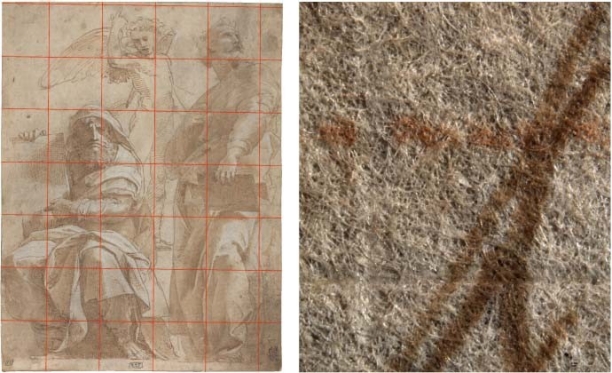
Conservation Division
National Gallery of Art
2000B South Club Drive
Landover, MD 20785
[email protected]
